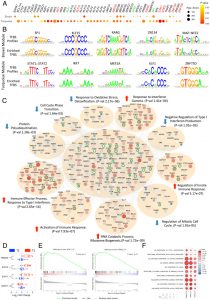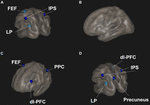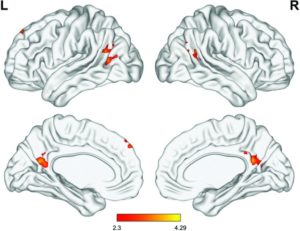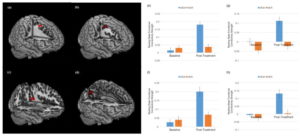Improve Immune function with a Meditation Retreat
By John M. de Castro, Ph.D.
“meditative practice enhanced immune function without activating inflammatory signals. This suggests that meditation, as a behavioral intervention, may be an effective component in treating diseases characterized by increased inflammatory responsiveness with a weakened immune system.” – Vijayendran Chandran
The immune system is designed to protect the body from threats like stress, infection, injury, and toxic chemicals. One of its tools is the Inflammatory response. This response works quite well for short-term infections and injuries. But when inflammation is protracted and becomes chronic, it can itself become a threat to health. It can produce autoimmune diseases such as colitis, Chron’s disease, arthritis, heart disease, increased cancer risk, lung disease, sleep disruption, gum disease, decreased bone health, psoriasis, and depression.
When the immune system attacks the liver, it produces autoimmune hepatitis which damages the liver. It is rare but affects women four times more often than men. Mind-body techniques such as yoga, Tai Chi and meditation have been shown to adaptively reduce the inflammatory response. So, it would seem reasonable that mindfulness training may be effective in treating autoimmune hepatitis.
In today’s Research News article “). Large-scale genomic study reveals robust activation of the immune system following advanced Inner Engineering meditation retreat.” (See summary below or view the full text of the study at: https://www.ncbi.nlm.nih.gov/pmc/articles/PMC8713789/ ) Chandran and colleagues recruited healthy participants in an 8-day meditation, yoga, and vegan diet retreat. Blood was drawn for genomic analysis 5 weeks before, immediately before and after the retreat and 3 months later.
They found that there was lessened activity in genes associated with oxidative stress, detoxification, and cell cycle regulation and increased activity in genes associated with the immune response but no change in genes associated with inflammation. Hence, participation in the meditation, yoga, and vegan diet retreat produced genetic expressions representative of improved immune response without inflammation.
So, improve immune function with a meditation retreat.
“multiple genes related to the immune system were activated — dramatically — when you do Inner Engineering practices,” – Vijayendran Chandran
CMCS – Center for Mindfulness and Contemplative Studies
This and other Contemplative Studies posts are also available on Twitter @MindfulResearch
Study Summary
Chandran, V., Bermúdez, M. L., Koka, M., Chandran, B., Pawale, D., Vishnubhotla, R., Alankar, S., Maturi, R., Subramaniam, B., & Sadhasivam, S. (2021). Large-scale genomic study reveals robust activation of the immune system following advanced Inner Engineering meditation retreat. Proceedings of the National Academy of Sciences of the United States of America, 118(51), e2110455118. https://doi.org/10.1073/pnas.2110455118
SIGNIFICANCE
Several studies on the impact of yoga and meditation on mental and physical health have demonstrated beneficial effects. However, the potential molecular mechanisms and critical genes involved in this beneficial outcome have yet to be comprehensively elucidated. This study identified and characterized the transcriptional program associated with advanced meditation practice, and we bioinformatically integrated various networks to identify meditation-specific core network. This core network links several immune signaling pathways, and we showed that this core transcriptional profile is dysfunctional in multiple sclerosis and severe COVID-19 infection. Very importantly, we demonstrated that the meditative practice enhanced immune function without activating inflammatory signals. Together, these results make meditation an effective behavioral intervention for treating various conditions associated with a weakened immune system.
Keywords: meditation, immune, Isha yoga, Inner Engineering, COVID-19
ABSTRACT
The positive impact of meditation on human well-being is well documented, yet its molecular mechanisms are incompletely understood. We applied a comprehensive systems biology approach starting with whole-blood gene expression profiling combined with multilevel bioinformatic analyses to characterize the coexpression, transcriptional, and protein–protein interaction networks to identify a meditation-specific core network after an advanced 8-d Inner Engineering retreat program. We found the response to oxidative stress, detoxification, and cell cycle regulation pathways were down-regulated after meditation. Strikingly, 220 genes directly associated with immune response, including 68 genes related to interferon signaling, were up-regulated, with no significant expression changes in the inflammatory genes. This robust meditation-specific immune response network is significantly dysregulated in multiple sclerosis and severe COVID-19 patients. The work provides a foundation for understanding the effect of meditation and suggests that meditation as a behavioral intervention can voluntarily and nonpharmacologically improve the immune response for treating various conditions associated with excessive or persistent inflammation with a dampened immune system profile.
https://www.ncbi.nlm.nih.gov/pmc/articles/PMC8713789/









